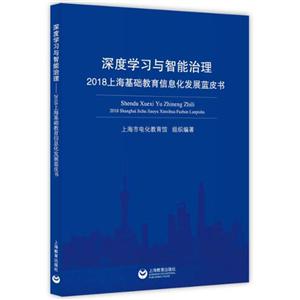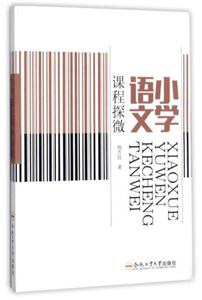中国高教改革(1992-2010)背题下的创业型大学谱系学研究

|
中国高教改革(1992-2010)背题下的创业型大学谱系学研究作者:高军 开 本:16开 书号ISBN:9787517805076 定价:45.0 出版时间:2014-12-01 出版社:浙江工商大学出版社 |
中国高教改革(1992-2010)背题下的创业型大学谱系学研究 本书特色
本书以福柯提出并由罗斯及米勒发展的治理术(governmentality)为理论框架,采用了谱系学(genealogy)的研究方法,来解构并重构中国高等教育政策(1992-2010),以此来探索在当代中国社会历史背景下出现的新型大学:创业型大学(enterprise university)。
中国高教改革(1992-2010)背题下的创业型大学谱系学研究 目录
list of figureslist of tableslist of abbreviations and translations of chinese conceptsacknowledgementschapter one introduction 1.1 background 1.2 research question and aims 1.3 definition of terms 1.4 research design 1.5 significance of the study 1.6 researcher identity 1.7 structure of thesis 1.8 chapter summarychapter two historical and global context of higher education reform in china 2.1 introduction 2.2 higher education in china: a historical review 2.2.1 higher education in china: before 1949 2.2.2 higher education in china: 1949--1916 2.2.3 higher education in china: 1977--1991 2.2.4 higher education in china: since 1992 2.2.5 summary 2.3 globalisation and higher education 2.3.1 globalisation 2.3.1.1 three major debates 2.3.1.2 the dimensions of globalisation 2.3.1.3 international organisations 2.3.2 restructuring of the higher education sector: a global trend 2.4 emergence of the enterprise university 2.4.1 neoliberal policy and the enterprise university 2.4.2 the knowledge economy and the enterprise university 2.4.3 academic cultures and the enterprise university 2.4.4 technological developments and the enterprise university 2.5 chapter summarychapter three theoretical framework 3.1 introduction 3.2 social imaginaries 3.2.1 castoriadis and studies of social imaginary 3.2.2 recent studies using social imaginary 3.3 governmentality 3.3.1 significance of governmentality 3.3.1.1 foucault and governmentality 3.3.1.2 miller and rose on governmentality 3.3.1.3 applications of governmentality in western contexts 3.3.1.4 recent development of governmentality studies 3.3.2 key concepts: power, government, subjectivity and space 3.3.2.1 power 3.3.2.2 government 3.3.2.3 subjectivity 3.3.2.4 space 3.3.3 governmentality and social imaginary 3.3.4 applications of governmentality in the context of china 3.4 chapter summarychapter four methodology and research design 4.1 introduction 4.2 genealogy 4.3 critical policy analysis 4.4 components of the study 4.4.1 constituting the global imaginary of the enterprise university 4.4.2 investigating the national imaginary of contemporary chinese universities 4.4.3 constituting the imaginaries of contemporary chinese universities 4.5 chapter summarychapter five governmental rationalities of higher education policy in china 5.1 introduction 5.2 the decision on the reform of china 's educational structure(1985) : initiator of higher education reform 5.2.1 policy context 5.2.2 rationalities of the 1985 decision 5.2.3 technologies of the 1985 decision 5.3 governmental rationalities of china's higher education policy (1992--2010) 5.3.1 knowledge of the objects of government 5.3.1.1 international competition 5.3.1.2 the introduction of the socialist market economy 5.3.1.3 knowledge economy 5.3.1.4 human capital 5.3.1.5 a xiaokang society 5.3.2 morality of authorities 5.3.2.1 morality of the ccp committee 5.3.2.2 morality of the government 5.3.2.3 morality of the ministry of education 5.3.3 language of representation 5.3.3.1 discourses of globalisation 5.3.3.2 socialist discourses 5.4 chapter summary chapter six governmental technologies of higher education policy in china 6.1 introduction 6.2 mechanisms and strategies 6.2.1 macro-regulation of the government 6.2.1.1 reform of administration and transformation of government functions 6.2.1.2 appropriation of funds and legislation 6.2.1.3 diversified provision of higher education 6.2.1.4 supervision 6.2.1.5 educational equity and justice 6.2.1.6 tracking and monitoring the policy implementation process 6.2.2 measures of university self-development 6.2.2.1 independent fund-raising by the university 6.2.2.2 quality and efficiency: competitiveness and prestige 6.2.2.3 rencai selection, cultivation and distribution 6.2.2.4 construction of university infrastructure 6.2.2.5 moral education 6.3 subjectivities and spaces 6.3.1 autonomous and entrepreneurial subjects 6.3.2 obedient subjects 6.3.3 new discursive and physical spaces 6.4 chapter summarychapter seven conclusion 7.1 introduction 7.2 the practice of critique 7.3 global imaginary of the enterprise university 7.4 critical analysis of china's higher education policy at a national level 7.5 significance and implications 7.6 limitations of the study 7.7 suggestions for further research 7.8 concluding remarksreferencesappendix language translation process and sample
社会科学 教育
在线阅读
- 最新内容
- 相关内容
- 网友推荐
- 图文推荐
上一篇:金融高等职业教育专业内涵建设研究
下一篇:古罗马的教育-从西塞罗到昆体良
零零教育社区:论坛热帖子
| [高考] 2022 西安电子科技大学《软件工程》大作业答案 (2022-04-25) |
| [家长教育] 孩子为什么会和父母感情疏离? (2019-07-14) |
| [教师分享] 给远方姐姐的一封信 (2018-11-07) |
| [教师分享] 伸缩门 (2018-11-07) |
| [教师分享] 回家乡 (2018-11-07) |
| [教师分享] 是风味也是人间 (2018-11-07) |
| [教师分享] 一句格言的启示 (2018-11-07) |
| [教师分享] 无规矩不成方圆 (2018-11-07) |
| [教师分享] 第十届全国教育名家论坛有感(二) (2018-11-07) |
| [教师分享] 贪玩的小狗 (2018-11-07) |






